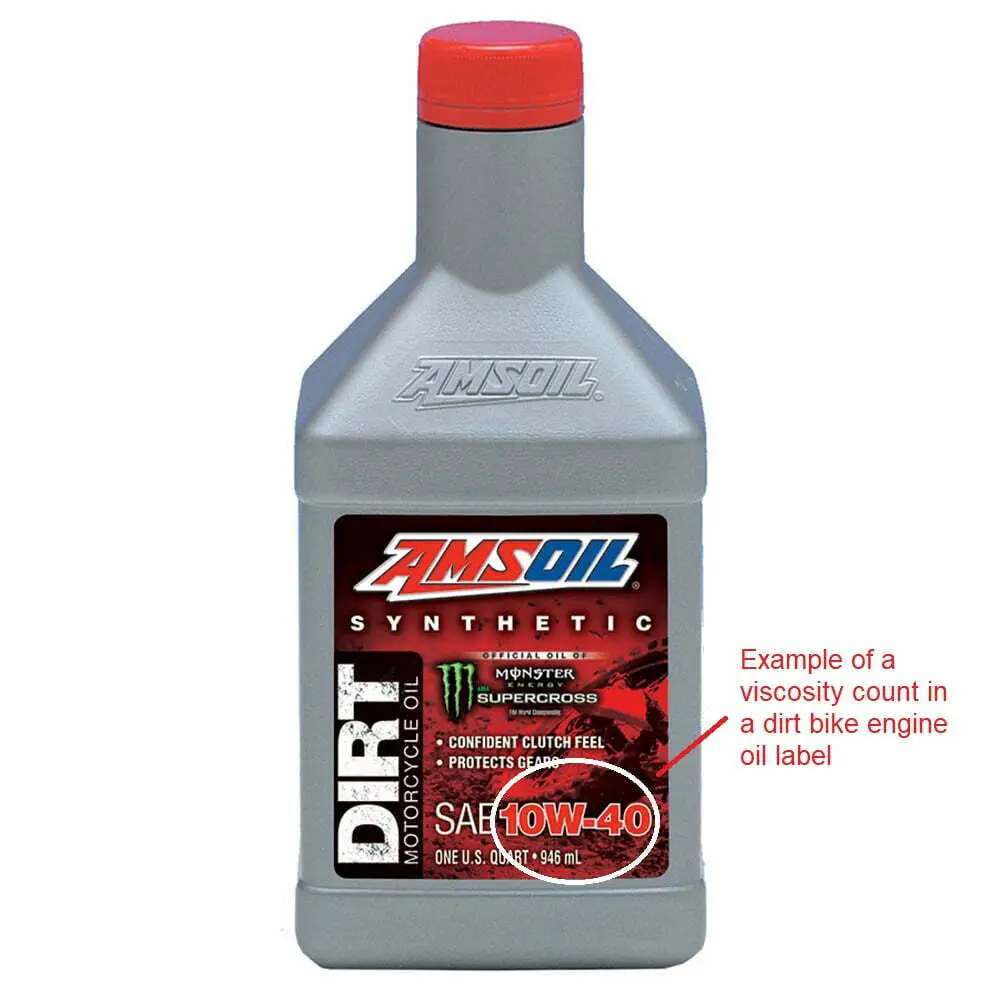Every rider knows that maintaining your engine oil is one of the most, if not the most, significant things you should do to keep your dirt bike running in its most pristine condition.
The question is, how often should you change your dirt bike oil?
It is recommended to check your dirt bike engine oil every 15 hours. Replace or refill the oil if it’s already at a low level or has changed color. For racing bikes, it is advisable to check after every race or every 2 to 3 hours of riding. Refill or replace the oil every 3 to 4 hours to be safe.
Engine oil and dirt bike engine – explained
Engine oil serves three major functions in a dirt bike engine:
Lubrication
As different parts and gears of your bike’s engine work to convert fuel into mechanical energy, the likelihood of friction also increases.
Engine oil keeps these parts lubricated, so everything runs smoothly and doesn’t wear out easily from friction.
Cooling
Engine oil effectively keeps the temperature of your transmission and pistons in check every time you turn off your bike.
It carries the heat from the lubricated parts once it returns to the oil pan.
Cleaning
The additives found in engine oil help clean any formed carbon on your dirt bike’s engine after the air-fuel mixture enters into ignition, resulting in more protection for your engine.
4 signs you need to change or refill your dirt bike oil
Fortunately, it’s easy to tell when your dirt bike oil needs an engine oil change. Here are four telltale signs:
Low engine oil level
If your dirt bike has a dipstick, take it out and check if the oil marks are beyond the recommended level (the embossed line on the stick).
If it’s below that level, fill your bike up with new engine oil.
If you don’t have a dipstick, check for a sight glass on your bike to see the oil level.
It’s usually on the lower section of the engine, near the area with the labels for oil capacity.
Difficulty changing gears
If you notice a bit of strain when you shift up or down a gear, the usual culprit is engine oil that needs replacing.
Performance is so-so
Oil stuck in your bike’s engine could prevent oil from reaching other parts of the engine and decrease your bike’s power.
The oil color looks too dark
Clean engine oil is yellowish in color, like honey or cooking oil.

So if you check your dipstick or the sight glass and see that the oil looks murky or too black, you’ll need to replace your engine oil ASAP.
How often should you change dirt bike oil?
For riders who go for casual or routine rides, changing your oil every 15 hours is ideal.
However, if you’ve been frequenting race tracks or practicing on rocky terrains, you should change your engine oil every 3 to 4 hours.
How to choose the right dirt bike engine oil
Two-stroke dirt bikes and four-stroke dirt bikes require different types and processes of changing engine oil, although both engine oils have the same procedure for lubricating your engine.
For two-stroke engines, you’ll need to buy pre-mixed oil, which you add to your fuel according to your preferred ratio.
They don’t require viscosity or weight.
If you’re a beginner at mixing fuel and oil, you can follow the recommended ratio in your manual.
You can also go for a 40:1 ratio – for every 15 liters of fuel, you add 375 ml of engine oil. Here’s an easy-to-use calculator to determine how many milliliters of engine oil you have to mix with your fuel.
Now, when buying four-stroke engine oil, you’ll usually see a viscosity indication on the label, like 10W40.
Viscosity refers to the thickness or weight of the oil under certain temperatures.
The higher the viscosity count, the heavier the oil is.

Choosing the proper viscosity is critical because it determines how well your engine oil reacts to different temperatures, speeds, and pressure and how it can protect your dirt bike during different weather.
During the winter season, dirt bike oil tends to thicken and flow slower, which is why it’s harder to start your bike on a winter morning.
This is why you should choose engine oil with lower viscosity for the winter season.
The W in the viscosity label of a dirt bike oil refers to Winter, not weight.
The number before the W indicates the viscosity level at -15 to -20 degrees Fahrenheit, while the number after the W indicates the viscosity level at 100 degrees Celsius.
Take the popular 10W40 label as an example.
This count means the oil is already good for colder temperatures and thins just the ideal level under hot temperatures.
Mineral oil vs. synthetic oil vs. semi-synthetic oil: what are the differences?
Engine oil can be categorized on the origin of the base oil, which makes up 80 percent of your engine oil (the rest are additives).
Mineral oil comes from oil refineries and is processed like gasoline or petroleum.
It has been around for decades, long before synthetic oil came onto the market, so they’ve built a reputation as the most popular engine oil.
Mineral oil is also popular because it’s more affordable than synthetic and semi-synthetic oil.
The biggest drawback to mineral oil is its origin and impurity.
Since it contains different molecules, it has the tendency to break down when used under extreme conditions.
So if you do motocross rides, mineral oil might not be the right choice.
Synthetic oil, on the other hand, is known for being produced in laboratories.
Because of their purity, they provide better lubrication, versatility at different temperatures, and resistance to chemical breakdowns.
Therefore, they deliver more power and lubrication than mineral oil.
And if you care about the welfare of dinosaur fossils and the environment, synthetic oil is the guiltless choice for you.
The only drawback to synthetic oil is its price. Depending on the brand, synthetic oil can cost double or triple the price of mineral oil.
If you want to try synthetic oil but can’t afford it, the second-best choice is semi-synthetic.
There’s no minimum percentage set for the amount of synthetic oil manufacturers can use, so some semi-synthetic may only have 5 percent or up to 30 percent synthetic oil.
Wrapping up
The engine oil is your dirt bike’s bloodline, so it’s essential to keep it clean and refilled every time you take your dirt bike on the road.
For dirt bikes used in casual or routine driving, it is recommended to check and replace your engine oil after every 15 hours.
While for more strenuous riding, such as enduro or off-road riding, you may want to check your engine oil after every race or every 2 to 3 hours.
When choosing engine oil for your dirt bike, you should consider the type of bike you have.
Two-stroke engines require premix oil, which you mix with fuel, while four-stroke engine requires careful consideration of the proper viscosity.
Furthermore, you have to decide whether to use synthetic, mineral, or semi-synthetic oil.
If all these sound overwhelming to you, fret not! You can always turn to your trusty manual to check the manufacturer’s recommended engine oil and the recommended interval for changing engine oil.



